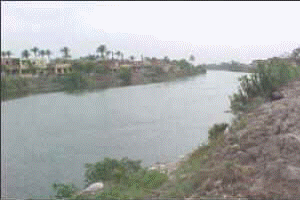
Water treatment operations generally aim to remove suspended matter that causes a rise in turbidity and a change in color and odor. The following are the steps of water treatment operations.
sedimentation process
This process aims to remove the suspended and sedimentable materials and depends on the action of gravity where the sediments are removed under the influence of their own weight and aluminum sulfate is used to disturb the balance of the water treatment processes generally aim to remove suspended materials Which causes a rise in turbidity and a change in color and smell. The following are the steps of water treatment processes.
sedimentation process
This process aims to remove the suspended and sedimentable materials and depends on the action of gravity where the sediments are removed under the influence of their own weight and aluminum sulfate is used to disturb the balance of the suspended materials and to create the appropriate conditions for sedimentation and removal from the sedimentation basins.
Filtration process
This process comes after the sedimentation process and aims to remove the remaining sediment through chemical treatment processes using sand filters. This process takes place inside the filter, which consists of three main parts: the filter box
It is a building made of reinforced concrete that contains the filtration media and the bottom drainage system, and its bottom contains a layer of gravel graded to prevent the exit of sand grains through the holes in the filtration medium.
It is a layer of silicon sand to which suspended materials stick when water passes through it
Bottom drain system
Its purpose is to collect the filtered water and distribute the washing water when the filter is being washed
With the continuation of the filtration process, the gaps in the middle of the water are narrowed so that the filter becomes less efficient, and then the filter is stopped with the washing water that collects in special channels placed at the top of the filter box, and is transported to the place where waste is treated and a washing process is conducted to clean the gaps from sediment, through Pumping clean water at high pressure from the bottom of the filter through the bottom drainage system, so the granules move and collide with each other, and thus they are cleaned of the suspended sediments and these sediments are pushed out of the station. This washing process continues for a short period of time (5-10 minutes) after which the filter is ready to work again other
disinfection process
It is the process used to kill disease-causing microorganisms (germs), and this process is done by using chlorine at certain concentrations that ensure disinfection of the water coming out of the station in the water distribution network with high efficiency, and does not harm humans or animals, because chlorine has the property of remaining in the water, which Ensures safe water as it crosses the distribution networks until it reaches the consumer. Chlorine also works to prevent viscosity and algae growth in pipes and tanks.
Chlorine practically plays four main roles for treating drinking water, namely:
Removing unwanted substances in water by oxidation.
Continuous protection of water in distribution networks.
Effective and urgent sterilization in the event of emergency contamination.
Continuous monitoring of water pollution by monitoring the extent of chlorine consumption.